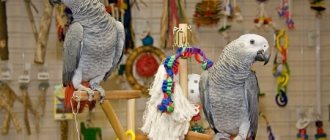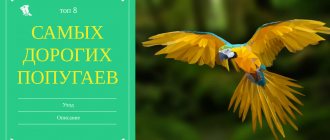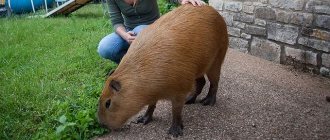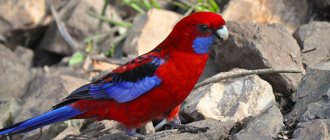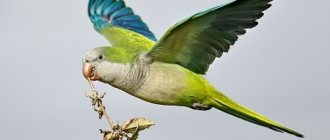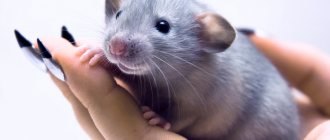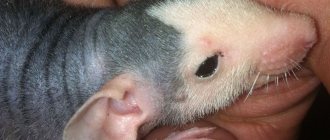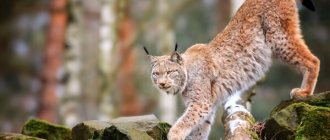The large tropical Amazon parrot is just a godsend for anyone who dreams of an extraordinary bird. The Amazon stands out among parrots for its particular liveliness, free behavior, and impulsiveness. You can expect anything from him.
There are two and a half dozen species of the Amazon genus, and they differ from each other in minor details. How to recognize what species a particular bird belongs to? What is the lifestyle of Amazon parrots in nature? Are there any difficulties in keeping an original pet at home, and what should you take care of before purchasing? You will learn about all this by reading the article.
Intelligence and character
In terms of intelligence, Amazons are second only to the gray African Gray. Trainable, sociable, quickly get used to new things.
Character and intelligence of a parrot
Characteristic features include hyper-emotionality, a tendency to jealousy, and rapid and frequent mood swings. Therefore, you need to monitor your pet and its psycho-emotional state. The harbingers of a bad mood are clearly visible in him - and then it is better not to approach him without something tasty. Even small children, for whom these parrots have a soft spot, can be harmed by a fit of jealousy or simply a quarrelsome nature.
Habitat
It’s easy to guess that the Amazons come from Venezuela. But this is not the only country where cereal crops grow. The tropical forests and wetlands of Colombia, Guiana, Peru, Eastern Ecuador and Brazil are inhabited by huge hordes of Venezuelan birds. Evolution has generously rewarded birds with a protective appearance that hides them in foliage. Dense tropical thickets located at various altitudes provide shelter for animals. You can meet them in natural conditions up to 1000 meters above sea level.
The Venezuelan parrot builds its nests in tree hollows or on branches. For three weeks, the expectant mother incubates 3 to 5 eggs. All this time, the male does not leave the family for long and feeds his wife. During the childbearing period, the hitherto unnoticed aggression of the father of the family manifests itself in full. The troubles end, and the behavior becomes equanimous and dispassionate. The caring keeper of the hearth tenderly cares for the chicks for up to eight weeks. They then set off on their own journey.
Sexual maturity is reached at the age of 4 years. For breeding in captivity, a nest box is installed.
They separate into pairs only during the breeding season, the rest of the time they move in small flocks of up to several dozen individuals. Large colonies, more than a hundred, move in search of food and shelter. There is enough fruit for everyone on the hatched branches.
Important! It is very difficult to distinguish a male from a female. DNA testing is offered to help.
In the wild, they feast on palm fruits, tree seeds, young branches and shoots. Fruit is always present in a carnivorous feast.
Appearance
Basically, the difference between a male and a female in size is very insignificant, and in onomatopoeic abilities too, but the appearance, as they say, is variable. Nature did not spare bright colors for the plumage of this bird.
A feature of Amazons is sexual dimorphism: in rare species, females can be distinguished from males by their appearance. Basically, in order to figure it out, parrots are gathered into a heap: parrots of the same sex will behave indifferently, and in a male-female pair, the men immediately begin to court the ladies.
But this is if they have already matured to the desire to reproduce. You can distinguish a mature parrot from a chick and a teenager by the color of the iris: in adults it is bright orange, reddish-brownish, and in young animals it is bluish-brown.
Appearance of an Amazon parrot
History of the breed
The Amazon parrot was first discovered by sea travelers in the mid-19th century in the Amazon River Valley (South America) - hence the name Amazon. The bird remained invisible to human eyes for a long time due to its sedentary lifestyle - it practically does not fly, and its moderate green plumage perfectly hides it in the crowns of trees and bushes.
At first, it was used as a fashionable delicacy - its meat was the basis of the exquisite dishes of famous European chefs, and feathers were used to decorate the dresses and hats of fashionistas of that time. Later, when the parrot accidentally showed its abilities as a mockingbird, they began to be ordered en masse for circus and theatrical performances, as well as for the personal entertainment of wealthy nobles.
It is also useful to read: Necklace parrot
Kinds
All Amazons are native to the Caribbean, Central and South America. They differ in the color of their plumage. Therefore, the names of species are determined either by geographical range or by coloration characteristics.
White-fronted and blue-fronted
The white-fronted (red-spectacled) parrot lives in tropical rainforests and is the smallest Amazon. Lives up to 50 years, is easy to handle, but does not like the cold.
Blue-fronted (red-shouldered) is found in Argentina, Bolivia, Brazil and Paraguay, lives in tropical forests. In the house he lives up to 90 years, in nature - as it turns out.
Yellow-shouldered and yellow-necked
The yellow-shouldered (yellow-winged) Amazon inhabits the bushes on the plain of the island. Bonair in Venezuela. Previously lived on Aruba, but was completely exterminated. Critically endangered and protected by CITES.
The Yellow-necked Amazon lives from Mexico to Costa Rica and is very popular among parrot lovers because it is extremely trainable, human-oriented, and screams less than other parrots.
Yellow-shouldered and yellow-necked parrot species
Venezuelan and red-tailed
The Venezuelan (orange-winged) Amazon also lives in Peru, Colombia and Brazil. Females are similar to males. They live in a cage for up to 70 years. If you don't educate them, they like to yell early in the morning and for various reasons. Outside the cage, he does not enjoy people's favor, since he is a notorious agricultural pest.
The red-tailed (Brazilian) Amazon loves to live in mangrove swamps and tropical jungles. Not that untalented, but less talented than his brothers. It is kept at home by lovers of rare breeds: 20 years ago the population numbered 3,000 birds. It is protected by CITES.
Red-throated and red-fronted
The red-breasted Amazon lives in the Antilles and Brazil. It is protected by the international treaty on the protection of the natural environment CITES. At the beginning of the 20th century there were only 400 individuals.
The red-fronted (yellow-cheeked) Amazon is called “autumn” in Latin (Amazona autumnalis) due to the predominance of red-orange-yellow tones in the color of the feathers. Range: Ecuador, Mexico, rest of South America. A very beautiful bird, but noisy and biting - just because of an excess of feelings.
Red-breasted and red-fronted Amazon parrot
Jamaican black-billed and yellow-billed
The Jamaican Black-billed and Yellow-billed Amazons are critically endangered. To a greater extent, this is due to the fact that their habitat, the tropical moist forests of Jamaica, is shrinking. The second reason is poaching.
Blue-cheeked and blue-capped
The blue-cheeked (orange-winged) Amazon lives in the most stuffy swampy areas of South America - Guyana and Suriname, in certain regions of Venezuela and Brazil. One of the rarest species.
The blue-capped (lilac-headed) Amazon inhabits Mexico from oak and coniferous forests to tropical jungles. It raids banana plantations, so farmers are struggling with the population. That's why CITES has protected them since 2004. The population size is close to critical - 7-10 thousand birds.
Cuban and soldier
The Cuban (white-headed) Amazon lives in Cuba, the Bahamas and the Cayman Islands. The Latin name "leukocephalus" corresponds to the synonym "white-headed".
Cuban and soldier parrot subspecies
The soldier's Amazon inhabits the subtropics and tropics of Colombia, Venezuela and Ecuador.
Royal and Imperial
The Royal Amazon lives on the Saint Vincent Islands, hence the second name Saint Vincent. Poaching of this species of parrots led to the fact that in 2000 there were no more than 500 individuals. It is protected by CITES.
The Imperial Amazon has chosen the Antilles and Dominican Islands. One of the largest varieties. Has a trumpet-like loud cry.
These beautiful, powerful birds suffered more than others from all imaginable misfortunes - by 2000, only 100 individuals were counted. The reason is poaching, hunting for the purpose of eating delicious meat, and constant hurricanes that destroy their habitats. Are protected by CITES.
Surinamese and yellowhead
Found from Mexico to Peru and Brazil. The classification of this subspecies is constantly changing. Birds are not prone to flocking; they often live in pairs. They are loved by home poultry farmers for their affectionate disposition and trainability.
Suriname and yellow-headed Amazon parrot species
Mueller
Amazon mullerian is also called flour. Lives in Central and South America. The largest parrots weigh up to 700 g, length up to 42 cm. When they are kept in captivity, it is necessary to provide opportunities for their physical activity, otherwise the birds may become obese. Especially jealous and aggressive parrots.
Violet
The purple (Guadalupe) Amazon is an extinct species. The last image is from 1905. It was endemic to the island. Guadeloupe.
Martinican
The Martinique Amazon also became extinct when the natural environment in Martinique collapsed.
Festival
The festival (holiday, blue-bearded) Amazon inhabits all of South America. He is loved for his talkativeness and intelligence, but he lives no more than 25 years.
Festival Amazon Parrot
A smart parrot that can be tamed and taught to talk and do tricks.
Luxurious
The luxury Amazon owes its name to its bright, multicolored colors. In the wild, it lives in Paraguay, Argentina and Brazil (for the most part). It was the Brazilian government that paid attention to the population decline in time, and thanks to the measures taken, in 1997 there were about 16,000 luxurious birds.
Blue-capped
The blue-capped (lilac-headed) Amazon is a resident of Mexico, where it is treated as a pest of banana plantations. This caused the population to decline to 10,000 individuals. It is protected by CITES.
Blue-cheeked
The blue-cheeked (orange-winged) Amazon is a very rare species, living in the wild thickets of Guyana, Suriname, Brazil and Venezuela.
Blue-cheeked parrot
Blue-faced
The blue-faced Amazon (Amazona versicolor) is native to the island of Saint Lucia and is its national symbol. In 2000, there were no more than 400 individuals.
yellow bridle
The yellow-bridled (Yucatan) Amazon inhabits Mexico, Honduras, Belize and the islands of Roatan and Cozumel. Leads a nomadic lifestyle; during the daytime, the flock numbers 50 parrots, and at night they can gather up to one and a half thousand.
Puerto Rican
The Puerto Rican wild Amazon, living in the rain forests of Puerto Rico, is under constant surveillance and protection.
Cavalla
Amazon Cavalla, white-faced - Central Brazil and the Amazon basin. The most unknown variety to science.
Amazon Cavalla parakeet
Green-cheeked
Green-cheeked lives in Mexico. But there is also a North American variety.
Description
Amazon parrots are large birds. The size of the body is 25 - 45 cm, while the weight of the pet can reach 500 g. The bird has bright, dense green plumage, which may have red, yellow or blue spots on the forehead, back of the head, wings, cheeks, tail or chest. They are used to determine whether a parrot belongs to one species or another. The beak of the Amazon parrot is strong, smooth, shiny, short, has a sharp-edged base and a curved end. It is capable of crushing large nuts.
The age of a bird is determined by the iris of the eye. In young individuals it has a grayish tint. In birds that have reached the age of three, the iris becomes chestnut in color. After this, determining the age of the parrot becomes very difficult. You can find out the sex of a bird by its behavior during the mating season. If there is only one individual, then only a veterinarian can determine it.
Care and maintenance
To care for Amazons, you need to provide them with a temperature of at least 22°C and a humidity of at least 60% - this corresponds to their natural living conditions. When the air is dry, parrots begin to itch and develop dandruff, and when the temperature is too low, they catch a cold.
To keep your pet warm and humid, an aquarium or a humidifier is enough.
To prevent the birds from suffering from a lack of sunlight, you can place an ultraviolet lamp above the cage, and in warm weather, take the house out onto the balcony for sunbathing.
Basic concepts about the care and maintenance of an Amazon parrot
Cage structure
The cage should be spacious, have a proper tray (i.e., one that can be easily pulled out, holds food and other debris in sufficient quantities, and can be easily cleaned).
Although the Amazon loves warmth, the cage should be kept away from radiators, heaters, and drafts.
Strong and thick rods and an external deadbolt are required. Inside there should be durable feeders and drinkers, toys, etc., and wheels at the bottom.
Hygiene and water procedures
Amazons love to swim to the point of oblivion; you can arrange baths for them with sprayers even every other day. Other hygiene measures include regular cleaning of the cage and tray, feeders and drinking bowls.
Hygiene and bathing a parrot
Diet
Amazon eats plant foods, least of all grains. He needs kidneys, fruits, berries and vegetables, one third - grains of not the highest fat content. From animal food they give boiled eggs and cottage cheese.
Amazon eats well:
- porridge with water (salt and butter excluded);
- legumes and dried fruits;
- children's fruit and vegetable purees;
- fresh berries, buds, inflorescences, etc.
Sprouted grains are beneficial. Meat is strictly contraindicated, as are potatoes, onions and garlic, avocado, papaya, mango and all kinds of food from the host’s table.
Walking around the apartment
You can walk around the apartment with this type of parrot only if they are the center of your attention, and nothing will distract the owner from contemplating such beauty. But this is not the most important thing.
Walking a parrot around the house precautions
The windows need to be closed before such a walk - especially in the case when the parrot is new in the house, and the desire to break free will overpower the budding friendship with the person. In order for a bird that is stressed in a new place to calm down a little, a walk is necessary; the Amazon will walk and fly, and make sure that he is not a prisoner, but a pet.
A bird that has lived in a house for several years usually returns when its owner calls if it suddenly flies out. But let's not forget about the level of intelligence of this species of parrot. He can decide his destiny at his own discretion - so there is no point in taking risks. Although some individuals will prefer sitting on the owner’s shoulder and cooing with him, his beloved, to walking around the apartment.
By the way, in films about pirates, it is the Amazons who usually sit on the shoulder of the stern one-eyed and one-legged man. Moreover, European gentlemen of fortune on three-masted galleons hunted precisely in the region where these parrots live - in the Caribbean. But cockatoo parrots could only sit on the shoulder of a former British pirate exiled to hard labor in Australia.
Blue-fronted Amazon. All About Pets
Amazons in the wild
Amazon parrots have a telling name, and this is explained by their place of residence. Their habitat is the Amazon River basin, as well as part of the islands in the Caribbean Sea. The hot, humid climate suits heat-loving birds like no other. In the impenetrable thickets of the South American jungle, green parrots feel under reliable protection. And they have many enemies: birds of prey and animals hunt the Amazons, poisonous insects poison their lives, giant snakes destroy their nests.
Lush vegetation fully provides the inhabitants of this natural area with a variety of food. Their diet includes seeds, fruits, nuts, young leaves and shoots, as well as insect larvae. Parrots do not have to fly far in search of food. The flock feeds in the same place where it spends the night.
At dawn, the noisy Amazons begin their roll call. Birds spend most of the day in trees, especially during the midday heat. Dense foliage shelters birds from the scorching sun. There are always some kind of showdowns and showdowns going on within the bird community. The fight intensifies when nesting season arrives.
Diseases and prevention
There are many diseases, but if your Amazon:
- got ruffled and disheveled;
- lost appetite;
- began to cough and sneeze, etc.,
You need to urgently contact a veterinarian. Self-plucking, redness of the eyes and cloaca, and discharge from the beak are also alarming.
Amazon
Nutrition
In order for your feathered pet to be healthy, develop well and feel great, it needs proper nutrition and a competent approach to organizing its diet . Amazons are not too picky, however, their life and appearance depend on their nutrition. Both overfeeding and underfeeding are equally harmful. A poor diet leads to weight gain, the parrot begins to pluck itself, gets sick, and its psyche is disturbed.
If it so happens that an Amazon with similar symptoms has fallen into your hands, do not despair. The situation can be improved by keeping the bird on a special diet. Food and a sufficient amount of protein will help with this. After a certain period of time, the bird will definitely recover, regain its health and beautiful appearance.
Follow these dietary guidelines:
- eggs are very healthy, they contain the protein birds need;
- meat is strictly prohibited, although the Amazons will not refuse it, but this will very soon disrupt the digestive system and lead to diseases;
- the basis of the diet should be a grain mixture of canary grass, millet, oats, millet;
- fruits are required, among the healthiest are lime and lemon, tangerine and orange, cherries and sweet cherries, gura, apple, banana;
- do not forget about vegetables: they are necessary in the parrot’s menu on a regular basis; you can give cabbage, pumpkin, carrots;
- it is worth feeding your feathered pet with berries, herbs and nuts;
- include mineral supplements in your diet on an ongoing basis;
- Remember that Amazons love to eat, regardless of how they feel.
Is it possible to teach to speak
According to the highest classification, Amazon belongs to androglossia, that is, imitating the human voice. You can easily find hundreds or more videos on the Internet where cheerful, sociable parrots sing songs, answer questions, pester their owners, and so on.
But if the chant can be attributed to simple onomatopoeia without any particular claim to semantic content, then communication with a person is clearly meaningful. The parrot understands the owner’s name, knows its own name, etc.
Amazons are capable of self-learning. They will remember everything that is said in front of them. Therefore, if you do not want to blush in front of guests, do not use obscene language in the presence of this cute bird. Otherwise, people who come to visit will have the impression that most of the parrot’s life was spent in a port hangout.
In order for a bird to learn to speak, you need to constantly communicate with it - then its vocabulary will be formed more reliably, without random inclusions and borrowings. This will not be difficult, since Amazons are sociable creatures to the point of indecency, they live with the slogan “how about talking?” Well, and shout.
SUPER Talking Parrot Amazon YUZIK – Super talking parrot on YouTube
Intellectual abilities
Like most large parrots, Amazon is endowed with extraordinary intelligence - he is a capable, trainable, talkative companion. The bird easily finds contact with its household.
The favorite pastime of most birds of this species is actively exploring the interior of the apartment . Despite its low ability to fly, the bird easily moves around the house, touching interior items and decor. Character disadvantages include some aggression, but it is inherent only during the breeding season and is easily corrected by special measures.
Do you have a parrot?
Not really
Reproduction
This type of parrot reproduces well at home: up to three eggs are laid, which incubate for almost a month. After about 2 months, the chicks are ready to start flying. If your female is hatching a chick, take care of special nutrition during this period.
You need to feed it with soaked grain and seeds. Mating games affect the Amazon negatively, making him aggressive, aimed at attack and destruction.
At this time, you should limit contact with the bird and not allow it to fly freely around the house.
Before you buy an Amazon, you need to prepare optimal living conditions for it. The tropical guest cannot tolerate hypothermia, so the temperature should be above +18 C. In addition, care should be taken to ensure high humidity, especially during the heating season.
It is best to buy a hygrometer, thermometer and monitor the level of humidity and temperature. Parrots feel best in rooms with a temperature not higher than +28, but not lower than +23 C, with a humidity above 60%. If you have dry air, don’t worry—a humidifier or other methods will solve the problem. You can cover the radiators with a wet cloth, dry clothes in this room, spray the air, place containers with water next to heating appliances.
The Amazon parrot loves to bathe, it can be sprayed periodically, and washing it is enough a couple of times a month. You can bathe the bird in a bath or under a warm shower. In the summer heat, you can give the bird the opportunity to enjoy the water, tumble, splash, and not just perform the washing ritual. If you do not follow these recommendations, the following problems may occur:
Buying a chick
It is best to opt for white-headed Amazons, or those with yellow spots on the head or wings.
They have the most flexible character and the greatest desire to learn human speech. It is better to make a purchase in a specialized nursery; fortunately, we have quite a lot of them in our country.
Please note when purchasing:
- The chick must be ringed;
- Age – 4 months;
- It must be manual;
- The iris of the eye should be brown. If it is not there, then the parrot is either wild or already an adult with an established character and possible sores.
The price for a parrot can be from 30,000 rubles, this is for a fosterling, that is, born at home from domestic parrots. If they offer you cheaper, around 15,000 rubles, then this is a savage chick, it is not recommended to take such a person. In nurseries, of course, there are only fosterlings.
Domestication
As already indicated at the very beginning of this article, this type of parrot is very friendly and willingly makes contact with the person who tamed it. He loves to talk with people and even try to out-shout them, trying to imitate human speech.
Teaching them to talk is usually not difficult, but you will probably need to be patient and time-consuming.
As for conversations, it is better not to irritate this parrot. This advice is due to the fact that the Venezuelan Amazon has a very grumpy and creaky cry, which may not be to everyone’s liking. It is better to leave the radio on for him so that he sings along to melodic songs, or to train him intensively. Let him talk instead.
However, this parrot is best trained only at a young age. This does not mean that, having become the owner of an adult, you should not teach him to speak. The chances of success will simply be significantly less.
Such a small pet will need to be kept in a cage of appropriate size so that the bird does not feel cramped. Moreover, the Venezuelan Amazon should be regularly allowed for walks inside your apartment. Let him run, fly and explore all the space close to the cage. This bird is quite inquisitive and will simply need toys and attention from you.
However, in cases where you have a small amount of free time, it would make sense to purchase a pair of these parrots. So that they spend their free time talking with each other.
How this parrot spends his time can be judged from the photos presented on the pages of our website.
When describing this, it is worth mentioning their life expectancy. On average they live about fifty years. However, in captivity, this period of time increases somewhat and can reach up to seventy years or more. This is directly related to the living conditions, which are influenced by high-quality and regular feeding, the absence of predators in the apartment that can attack the bird, as often happens in the wild, as well as other various, but no less important factors in the life of a parrot.
